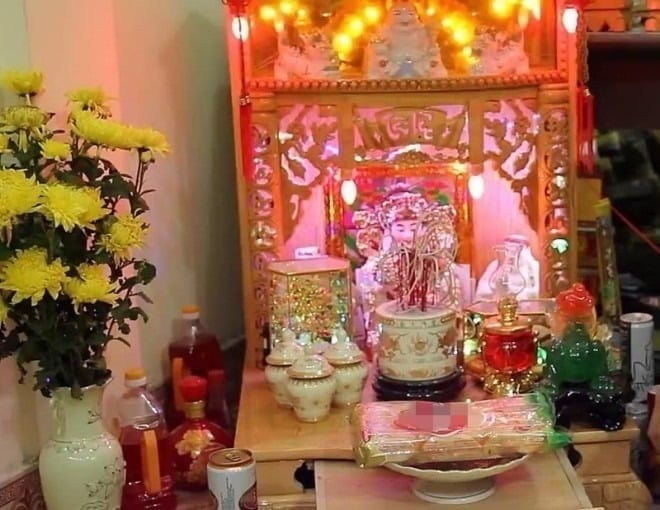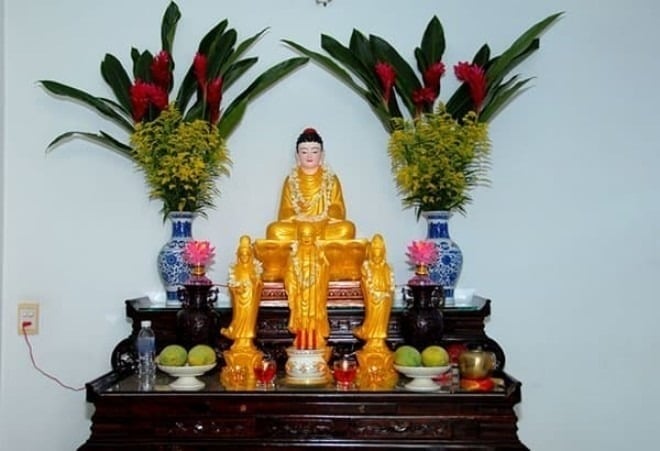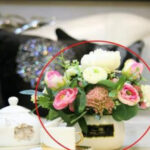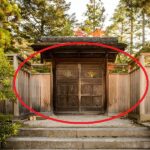Floral arrangements are an integral part of ancestral worship during special occasions such as the 1st and 15th of the lunar month, festivals, and death anniversaries. Arranging flowers demonstrates reverence and is believed to attract and accumulate fortune for the family.
Fresh flowers bring new life and the essence of nature, infusing the worship space with freshness and solemnity. Placing a flower vase on the altar is thought to enhance positive energy and attract the blessings of ancestors and deities. However, not everyone knows the correct way to arrange flowers on the altar.
Why do wealthy families usually place a flower vase on the left side of the altar when burning incense?
Typically, well-off families pay great attention to worship and rituals. They believe that arranging the altar according to Feng Shui principles demonstrates respect for their ancestors and brings prosperity to the family.
When there is only one flower vase, it is usually placed on the left side of the altar. This arrangement follows the rule of “east for vase and west for fruit,” meaning the flower vase should be placed in the east direction, while the fruit plate should be in the west.

Well-off families often pay meticulous attention to worship rituals and altar arrangements.
According to natural laws, the sun rises in the east and sets in the west, and trees usually bloom before bearing fruit. Therefore, placing the flower vase in the east and the fruit plate in the west aligns with nature, contributing to a smoother and more favorable flow of events.
If the altar faces the main door in a southern direction, placing the flower vase on the left side of the altar (east) will allow the fragrance of the flowers to permeate the room when the east or southeast wind blows, creating a serene and sacred atmosphere for worship.
When using two flower vases, arrange them symmetrically on both sides, with the fruit plate in the center, in front of the incense burner. This setup not only gives a sense of fullness and warmth to the altar but also preserves the significance of the flower vases.

Symmetrical arrangement of two flower vases with the fruit plate in the center creates a harmonious and meaningful display.
In addition to the flower vases, the altar should also include other ceremonial items such as the three (or five) ceremonial objects, a ceremonial tray, and an incense holder to enhance the solemnity of the space. For smaller altars, such as those hung on walls, a single flower vase and an incense holder placed opposite each other are sufficient.
It is important to avoid overcrowding the altar with too many flower vases, as this may disrupt the balance with other ceremonial items and detract from the positive energy.
The flower vases on the altar should preferably be made of ceramic, porcelain, or glass, while materials like copper or iron are best avoided. The flowers should have a subtle fragrance, be free of thorns, and be neatly trimmed to ensure both spiritual value and safety.








































